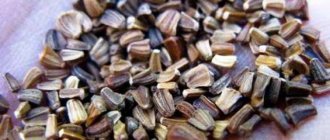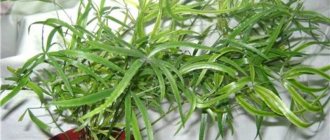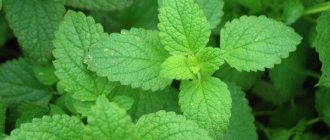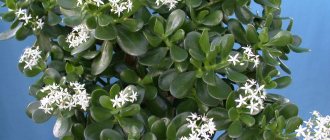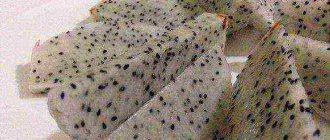Limonella: citrus attack
Hello, dear comrades.
On this gloomy and damp day, I want to return to fresh citrus notes in our communication. And today a wonderful home plant - limonella - will come to my aid. It has been successfully cultivated indoors for quite a long time. Limonella has another name - limequat. Basically, limonella is a hybrid of the Japanese kumquat plant and Mexican limes. This is the reason why the fruits of our limonella are similar to small lemons. By the way, cooks have long learned to replace the usual lemons with limonella fruits. You just need to correctly calculate the concentration of juice. And for this it is worth remembering that limonella fruit is at least twice as sour as lemons.
So, I hope that limonella has already interested you not only from the point of view of decorativeness, but also in terms of practical use, which means it’s time to talk about how to grow limonella correctly and what kind of care it needs.
Uses of Limonella
With the help of limequat, representatives of alternative medicine treat various diseases; it is used by cosmetologists and cooks. In addition, the plant can serve as a good decoration for your home or garden.
In folk medicine
Traditional medicine uses limequat for:
- migraine relief;
- relieving pain from nerve inflammation;
- prevention of gastrointestinal diseases;
- inhalation for colds;
- good night.
In addition to limonella, for digestive problems, the following are also used: bathwort, calendula, meadow sage (salvia), linden, chervil, bifolia, watercress, yucca, dodder, viburnum buldenezh, goldenrod, onion, peanuts, oregano (oregano) and kale.
In cosmetology
Cosmetologists use limonella to make products:
- tonic lotions;
- anti-wrinkle masks;
- skin softening oils;
- to relieve skin inflammation;
- preparations for removing warts;
- creams for tired skin.
In cosmetology, they also use momordica, purslane, marigolds, nasturtium, leeks, bird cherry, rosemary, meadow cornflower, broccoli, garden savory, soapwort (saponaria), akura honey and linden.
In cooking
Limequat can be added to any dish in place of lemon or lime, but due to its more intense flavor, it is added in smaller quantities.
Using a special citrus juicer, you can squeeze juice out of it and drink it, mixing it with other juices. You can use it to make a filling, cocktail, cream, meringue or soufflé; you can sprinkle it on peeled apples to prevent them from darkening.
Did you know? Lime is often considered a hybrid of lemon, but this is fundamentally wrong, because it was already growing green in the lands of Asia, when lemon had never been heard of.
The peel is suitable for making candied fruits and zest. The pulp along with the peel is suitable for candied wedges; you can make a fruit salad from the pulp of limequat and other fruits. Limonella jam will have an original taste.
This citrus is suitable not only for desserts, but also for preparing sauce for meat, baking fish or poultry.
In gardening
By planting limequat, you can decorate not only the room, but also the area near the house. This tree looks good even if the flowering period has not yet begun or has already ended. It is resistant to cold, produces a generous harvest, begins to bear fruit early and is not picky in its care. However, it needs to be planted in special containers, and not in open ground - limonella will not be able to winter outside.
How to care for limonella?
And, in principle, caring for limonella is very similar to caring for any other classic citrus plant. And if you have followed our experimental plantings of tangerine, lemon and other citrus fruits, it will be much easier for you to deal with limonella.
The main thing that we learned from previous experience in growing citrus crops is the complete inadmissibility of waterlogging, as well as drying out of the earthen coma. Therefore, when growing limonella, our number one task is to constantly maintain the earthen clod in a slightly moist state.
In principle, if we consider citrus plants globally, then the degree of adaptation of limonella to growing indoors is somewhat higher than any other citrus crop can demonstrate to us. And in this regard, limonella tolerates even dry apartment air much easier than its citrus “relatives”. Although, if dryness is present, it is better to fight it by any means known to an experienced gardener. And not only banal spraying can be used. For limonella, the option with moistened pebbles in a tray, on which the planting container is placed, is ideal. The main thing is that the water does not come into contact with the bottom of the pot.
Limonella is absolutely not picky about air temperature . Of course, not without critical points, but, nevertheless, it can easily cope with almost any growing conditions. Cold wintering is not a problem for limonella. As long as the temperature does not drop below ten degrees Celsius - that’s the whole wisdom. Although the shedding of leaves occurs only when the mercury column does not reach five degrees above zero.
Limonella loves high-quality nutrition. You can get by with a banal option like tea leaves. Or you can buy a liquid complex fertilizer, which the plant will accept with a bang - why not an option?
If you decide to propagate limonella , do not bother with seeds - cuttings will help you. By the way, you can graft the plant. But let us return to our rams, or rather, to our cuttings. They should be semi-lignified at the time of cutting, that is, you can cut them in early spring. Cuttings can be treated with our favorite root and then immediately rooted in a substrate prepared in advance. If you want a 100% result, cover the cuttings with cellophane or a jar to create a greenhouse effect. We do not remove the coating until at least two full leaves appear. Well, and, of course, we ventilate our greenhouse at least sometimes.
And limonella also needs a transplant, friends . Moreover, the plant needs it within a couple of weeks after you bring it from the store to your native land. Please note that in ninety-nine percent of cases, store-bought planting containers do not contain a suitable soil mixture for a particular plant, but transport soil.
But plants cannot grow successfully in it for a long time. So be sure to replant it in citrus soil - see the picture (clickable) above on the right. The next transplantation of limonella will be required only as it grows - as usual, we focus on the development of the root system. The transplantation is carried out in the spring, at most it can be delayed until the beginning of summer, but no further. When choosing a new planting container, look at the diameter of the pot: it should be at least a couple of centimeters larger than the diameter of the previous pot. By the way, let's return to the topic of soil for a couple of seconds: the main point is the choice of neutral soil, so make sure that peat does not appear in the composition of the purchased soil. If you don’t like any of the suggested soils, you can create the desired mixture yourself. Is there a forest planting near the house? Great, go there and pick up some earth. Add a little river sand to it (its total volume should not exceed ten percent of the volume of the finished soil) and literally a handful of wood ash. Don’t just add sand out of the blue: please boil it first. The collected land can be any kind, but not from under oak trees or chestnut trees.
Limonella is afraid of water , especially stagnation, so good drainage is the key to real success.
When replanting, try not to injure the root system of the plant. The best solution would still be transshipment. Place the earthen ball with the plant in a new pot and add fresh soil to the sides, lightly compacting it. All moisture should drain away.
Limonella has sworn enemies - pests , which is not surprising. For example, a plant may die due to chlorosis. The foliage begins to lose color and fall off. Moreover, yellowing can occur in different ways: it can begin with spots on the leaves or slightly yellowing veins. The source of this disease can be both pests and lack of nutrients. Affected leaves should be immediately removed, after which the plant is washed with soapy water, or even better, with soapy foam. After this procedure, it would be nice to fertilize the limonella.
The longtime enemy of all houseplants, the spider mite, is also terrible for our limonella. Have the leaves started to curl? Have cobwebs appeared on your plant? There is a very high probability that the spider mite rushed to the offensive. The days are counting, we need to act quickly! We wash the plant with soapy water - at first this is quite enough.
If the leaves begin to become covered with brownish-grayish spots, it is possible that the plant is suffering from attacks by scale insects. You can also use a soap solution (oh, this is a universal remedy!), and if this method no longer helps, you will have to run for insecticides to save the plant.
Aphids and scale insects can be defeated using onion tinctures . It’s easy to prepare such a remedy, and it won’t take much time. Take an onion, grind it through a meat grinder, fill it with 0.5 liters of warm water and leave it alone for two days. We process the plant at least three times at intervals of a week.
So, my dear readers, there is no hassle or worry for you with limonella. If you were still in doubt about whether to get such a plant, I hope that I have now been able to dispel all your doubts about this!
Goodbye friends.
PS: Limonella also sometimes suffers from fungal diseases. Garlic tincture can easily cope with them, which can be used no more than once a month. If the disease is advanced, add Bordeaux mixture and potassium permanganate solution on top.
Features of home care
Limonella is a rather unpretentious plant. To grow at home, you need to comply with a number of mandatory care requirements, which are common to all citrus fruits.
Limequat is a light-loving plant that needs to be provided with diffuse sunlight for 12-14 hours. The citrus plant in question does not tolerate direct sunlight. Direct contact may cause burns to foliage, fruit and bark.
To avoid the adverse effects of the sun, it is recommended to place the tree on window sills on the east or west side of the building. If the windows face south, limonella should be placed in the back of the building. On the north side, the plant will need additional lighting.
Additional lighting is also recommended in autumn and winter. Signs of a lack of sunlight in limequat are: pale color of the leaves, drying out of their edges, and falling off.
Limequat is a citrus that is not suitable for growing at low temperatures. Already when the temperature drops to +5 °C, the plant will begin to lose its leaves profusely. Frosts with temperatures down to -1 °C will lead to damage to the branches, bark, and root system. At this temperature, the plant dies, so limonella needs to be brought to a warmer place for the winter.
When choosing a growing room, it is important to consider the movement of air masses. Limequat loves fresh air, but does not tolerate drafts.
The plant quickly takes all the nutrients from the soil, so within thirty days after planting the soil must be fertilized. For this purpose, special preparations for feeding citrus fruits or homemade products are suitable.
Ingredients for feeding limequat:
- ash - 1 tbsp. l., dissolved in a glass of water;
- used tea leaves;
- quinoa - finely chopped, infused for twenty-four hours in water.
Fertilizing is carried out annually - once every 15 days - during the period from the beginning of flowering to the end of fruiting. Before fertilizing, you need to water the soil generously.
Limonella does not tolerate excessive soil moisture, nor does it tolerate dryness. Watering is done when the soil becomes dry. The amount of water for irrigation should be such that its volume is sufficient to moisten the soil to its full depth.
During hot and dry weather, as well as during the heating season, the plant should be sprayed with water. But you shouldn’t be overzealous with this, because limequat can rot from excess moisture in the air and soil.
Transfer
For normal and healthy growth, limonella needs to be replanted periodically. Transplantation is performed when the length of the tree trunk exceeds the height of the pot twice. The optimal time for the procedure is mid-February, the period preceding the beginning of active growing season and flowering.
Transplantation is carried out using the transshipment method. The roots of the plant, which are highly sensitive, are removed from the previous container along with the soil. You cannot straighten or wash the roots during the transplant process.
Diseases and pests
Limonella is susceptible to several specific diseases that can lead to deterioration of the plant or to its complete death.
Chlorosis is a disease that causes a decrease in the activity of photosynthesis processes and leads to a disruption in the formation of chlorophyll in the leaves. Signs of chlorosis are the following:
- yellowing and falling leaves;
- reduction in leaf size;
- drying of the tops of branches;
- death of roots.
The development of chlorosis can be caused by a variety of factors.
- The activity of microorganisms, bacteria and fungi.
- Unfavorable soil condition - lack of mineral elements.
- Bad climatic conditions.
- Insufficient care, gross violations of the rules during cultivation - small volume of the plant growing container, lack of normal drainage.
A hereditary form of chlorosis has also been established, when the disease is transmitted at the genetic level.
The following methods are used to combat the disease:
- saturation of soils with organic and mineral fertilizers;
- soil mulching.
If the disease is infectious, the plant is destroyed.
Malsecco is a fungus that causes drying out of citrus trees. The disease manifests itself in the form of withering of young shoots, falling off of green leaves, drying out of branches, and the appearance of discolored areas on the bark and wood. Dried branches become gray, followed by the appearance of black spots.
There are no effective treatments. Once infected, the tree dies within one or two seasons. Malsecco fungus is carried to new trees by the wind, insects and birds.
Preventive measures to protect against the disease:
- timely cleaning and cleaning of the area, destruction of fallen branches, leaves, pieces of bark;
- pruning damaged and dried branches;
- avoiding the appearance of wounds and damage to the tree.
The most common limonella pests include scale insects, mites and aphids. To destroy parasites, spraying with soap or onion solutions is used, as well as the use of special industrial fungicides.
Features of cultivation
You can grow a lime tree at home in two ways:
Cuttings
To plant a lime tree, you need to cut a shoot 10-15 cm long from the top of the tree. Such a shoot must have at least 5 healthy vegetative buds. All leaves on the cutting are removed, leaving only the 3 strongest and largest.
The cut is made at an angle of 45° using a sharp sterile instrument - a knife or pruning shears. The cut cuttings are treated with a root formation stimulator - Kornevin or Heteroauxin. Then the shoot is planted in wet sand.
To germinate indoor limes, special conditions are required - high humidity and temperature. Therefore, the plant is placed in a well-lit place where there is no direct sunlight and covered with half a plastic bottle. The shoot should be regularly ventilated and sprayed.
If everything is done correctly, the indoor tree will take root within a month. After which, he is gradually accustomed to indoor conditions, cleaning the shelter daily. The plants are transplanted into separate pots with a diameter of about 6-7 cm. Limes are planted in pots made of ceramic or clay material. In such a container, the plant’s root system is less susceptible to rotting and will develop fully. The resulting hybrid begins to bloom and bear fruit already 3 years after planting.
Seed cultivation
Provide the plant with optimal conditions
When growing limes at home, you will need a seed from a quality fruit. Choose ripe fruit, without mechanical damage or rot. The seeds are washed and then dried for 2 hours. To plant lime seeds, you must use a special substrate made of universal soil and coarse sand in a 1:1 ratio. A layer of expanded clay (1.5 cm) is placed at the bottom of the pot, then the nutrient mixture is poured.
Seeds should be germinated in greenhouse conditions. During the germination process, they are periodically ventilated and irrigated with warm water from a spray bottle. The success of growing a lime tree in this way will depend on a stable temperature in the greenhouse - 25-26°.
Germination will take from 2 to 4 months. One seed produces several sprouts.
Choose strong sprouts that have 2-3 leaves. The plantings are gradually accustomed to room air, then the seedlings are picked into separate containers with a diameter of no more than 6 cm. The composition of the soil is the same as when planting cuttings.
The first fruiting from seeds will begin at 4-5 years of age. The advantage of such cultivation is that the new plant retains all the varietal characteristics of the mother specimen.
How to grow
Limequat can be grown at home in three main ways:
- Cuttings cut in spring are rooted in a moist substrate and surrounded by a mini-greenhouse, covered with a transparent film or glass jar. Periodically ventilating and spraying with a spray bottle, they are kept until the first leaves appear, and then replanted.
- Grafting of cuttings is carried out either on a plant with a well-developed root system, or on other citrus trees - it can be lemon or tangerine.
- Youstis can be grown from seed. But since this is a hybrid, there is a high probability that such a tree will not have fruits. Well-washed seeds are planted in small cups with moist soil, and when the first leaves appear on the sprout, the plant is moved to a larger pot.
Read also: Aspen: medicinal properties and use in folk medicine
Rules of care
Basic lime care at home is not much different from growing a pomelo, orange or other plants of the Citrus family.
Illumination
This is a sun-loving plant that prefers bright, diffused light. The best location is a window sill on the east or west side. On the southern windowsill, shading from the sun will be required, especially during the midday hours. In the northern side, provide artificial supplementary lighting.
The lime tree requires 12 hours of daylight.
Temperature
Depending on the season, homemade limes require different temperatures. During the spring-summer period, this figure is 30-35°, in the autumn-winter period - 20-25°. At this temperature, the plant will fully develop, bloom and bear fruit profusely.
Humidity
High air humidity is important for wood
This plant needs high air humidity throughout the year:
- daily irrigation of the crown with a spray bottle;
- shower with warm water - at least 2 times a month;
- placing the plant on a tray with moistened sphagnum moss or expanded clay;
- placement of water containers indoors.
Watering
Moderate watering is required when the top layer of soil dries out. In winter, watering is reduced to 3 times a month. Use water at room temperature.
Fertilizer
Growing limes in a pot requires regular fertilizing. A balanced diet will ensure the plant’s health and high-quality fruiting.
Twice a week the plant is fed with a special complex fertilizer for citrus fruits. You can also use mineral and organic fertilizers alternately. Mullein solution is used as organic matter. In winter, if the plant is kept in low temperature conditions, no fertilizing is applied. If kept warm in autumn and winter, limes are fed twice a week. The liquid solution is poured onto the soil until it flows out through the drainage holes. Fertilizing is applied the next day after watering, which will eliminate the risk of burning the root system.
Phosphorus-potassium preparations are used as mineral fertilizers. They stimulate the growth and development of the tree, as well as its flowering and fruiting.
Some gardeners use an unusual fertilizer for this plant - fish soup. 200 g of fresh fish waste is poured with water and boiled for 5-7 minutes. Then dilute with boiled water in a ratio of 1:2. Cool and filter through cheesecloth. Apply liquid fertilizer once a month after the plant reaches 1 m in height.
Trimming
Growing requires annual trimming. Crown formation begins immediately after planting. The apical shoot is cut off to stimulate the development of lateral branches.
The following year, all shoots are trimmed to 1/3 of the length. All damaged and broken branches are trimmed.
Features of the formation of the crown in subsequent years include sanitary cutting, removal of branches that thicken the crown and grow at the wrong angle.
Transfer
The plant is transferred to a new pot annually at the end of winter - beginning of spring. Mature trees are replanted less often - if the roots begin to grow through the drainage holes. For them, the surface layer of the earth is replaced.
A commercial mixture for citrus fruits, which has good moisture and breathability, is suitable for replanting. You can also plant in a mixture of turf, leaf, humus soil and sand, mixed in equal quantities. To eliminate the risk of injury to the roots, transplantation is carried out by transferring the earthen clod into a container 2-3 cm larger.
Limonella, citrofortunella (Care instructions)
Planting (transplantation)
The signal for replanting a limonella plant is the appearance of the tips of the roots from the drainage holes of the pot or on the surface of the soil in which the plant grows. Young limonella plants are replanted annually, adult plants - after 3 - 4 years, using the transshipment method. To transplant a limonella plant you need: - a pot made of any material, the shape of the pot must be cylindrical (there must be drainage holes in the bottom), the volume must be 50% larger than the previous one; — fine crushed stone and river sand for drainage; - pre-prepared soil. To transplant a limonella seedling, you need specially prepared soil for citrus fruits, for example, “Lemon”, it is presented on our website in the section “Soils and fertilizers for indoor plants” - “Soils for indoor plants”. Or prepare the soil for limonella yourself: for replanting, you need to take soil from a deciduous forest or park from under deciduous trees, except oak, chestnut, poplar and walnut. It is necessary to take only the top, most fertile layer of soil, 5–10 cm thick, without fresh fallen leaves. Add river sand, ash and humus to this soil. The proportion of soil for limonella is as follows: two portions of deciduous soil, one portion of sand, 0.5 portions of humus and ash. Place fine crushed stone at the bottom of the limonella plant pot as drainage, and pour river sand on top of it. The thickness of the drainage should not exceed 3 - 5 cm. In the pot, on the drainage, pour soil 3 - 5 cm thick, place the limonella plant in the pot, sprinkle it with soil, while lightly compacting it. When replanting limonella, it is IMPORTANT not to deepen the plant, i.e. the top layer of soil in which the plant grew should not be lower than the level of the added soil. Spray and water the transplanted limonella plant with a slightly pink solution of potassium permanganate (potassium permanganate).
Reproduction
The limonella plant propagates mainly by grafting onto seedlings or by air layering.
Lighting
It is important to choose the right location for your limonella plant. Do not use a window sill for this. Position the limonella plant so that its leaves receive as much sunlight as possible, but do not place it closer than 1.5 meters to central heating radiators or heating devices. The best option for limonella seedlings is a room with windows facing south. In summer, it is recommended to take the limonella seedling out into the open air - into the garden, onto the veranda, onto the balcony, placing it in a place protected from the wind. It should be remembered that with a lack of sunlight, limonella fruits have increased acidity. In winter, when there is little light and daylight hours are short, the limonella plant can be illuminated, increasing the length of the day to 10 - 12 hours.
Air temperature
The ideal conditions for the development of a limonella plant are a warm and humid climate, with an air temperature in summer up to + 35 ° C and air humidity in the range of 65 - 80%; in winter it is advisable to keep the limonella plant at a temperature no higher than + 10 - 15 ° C. It should also be noted that a limonella seedling can tolerate a short-term drop in temperature to 0°C.
Watering
In spring, summer and the first half of autumn, the limonella plant should be watered as the top layer of soil dries, without allowing the lump of earth in the pot to completely dry out. To determine the soil moisture of limonella, take the time to take a little of the surface layer of soil with three fingers every day and squeeze it. If the lump crumbles, it’s time to water, otherwise there’s no need. You need to monitor the condition of the limonella soil daily (especially in summer) so that the entire earthen lump in the pot does not dry out due to high temperatures and bright sun. In winter, the limonella seedling is dormant, its growth processes are inhibited and, accordingly, it requires less water. Therefore, the intervals between waterings should be increased. The question of where to get water for watering and spraying the limonella plant, and what it should be, is also very difficult, and therefore we will dwell on it in detail. In a city apartment, drinking water is practically unsuitable for limonella plants, since it contains a large amount of compounds of alkaline earth metals and chlorine, which together, and each individually, cause great harm to the seedling. Many sources recommend boiling tap water for limonella, but this does not always immediately lead to the desired result; the extra hassle often discourages potential indoor plant growers, so it is best to take hot water from the tap. This water contains less chlorine and is softer. But even hot water must be left for at least a day in an open vessel to completely remove chlorine, which is harmful to limonella plants. In rural areas, water can be taken from a well, but it is better from a lake or stream and left in the room for heating. Rainwater now contains many harmful impurities, so do not collect it. In any case, wherever the water is taken, it must be left for at least a day in an open container at room temperature.
Spraying
Limonella seedlings should be sprayed with water from a spray bottle or any other method at least once a day, especially in summer. This will increase the humidity and wash away dust from the limonella leaves. At least once a month, it is advisable to place a limonella seedling in a bath, cover the soil in the pot with plastic wrap and treat the entire crown with cotton wool and soap suds. Then you won't have to deal with difficult pest control. Do not forget to cover the ground with a plastic bag and bandage the tree trunk below with gauze or a bandage so that the soapy water is absorbed into the fabric and does not get into the soil.
Fertilizer
In winter, limonella seedlings are not fed; in spring and summer, the seedlings are fed once every two weeks. Any fertilizing for limonella should be done only the next day after watering, i.e. when the soil in the pot is wet, otherwise you can burn the roots. Pour limonella fertilizer into the soil until the solution begins to flow out of the drainage holes. To feed a limonella tree, you need an organic fertilizer for citrus fruits, for example, “Lemon”, it is presented on our website in the section “Soils and fertilizers for indoor plants” - “Fertilizers for indoor plants”. Feeding adult limonella plants, at least one meter high, with fish soup once a month increases the fruiting of the tree. This fertilizer is made like this: boil 200 grams of fish waste or small unsalted fish in two liters of water for half an hour. Then dilute the solution with cold water in a ratio of 1:2 and strain through cheesecloth. This fertilizer must be used together with the Lemon fertilizer mentioned above.
Read also: Sanguinaria canadensis: recommendations for reproduction and care
Pests
The enemies of limonella seedlings are sucking and gnawing pests, as well as fungi and viruses. The most common pests are: spider mites; scale insect (false scale insect). They are combated with chemical and biological preparations, which are more acceptable in open soil conditions in the subtropics and greenhouses. It is advisable not to use pesticides for limonella trees in apartments. Signs of spider mite infestation are as follows: white dots appear on old limonella leaves on the underside, and the reddish mite itself is visible to the naked eye. If you touch it, it starts to move quickly. Young limonella leaves curl into a “boat” and become entangled in a white web. To combat mites, use tobacco dust, garlic, and laundry soap. Take 1 tablespoon of tobacco dust and pour a glass of boiling water, leave for 6 days. Add 10 grams of laundry soap to the resulting tincture and spray the limonella plant 3 times with an interval of 6 days. Garlic is used as follows: one head of garlic is crushed, poured with a glass of hot water and left for 2 days. The solution is filtered and the limonella plant is sprayed 3 times with an interval of 6 days. When a limonella seedling is infected with scale insects, brown-gray shiny round formations with a diameter of 3-5 mm are visible on the surface of young and old leaves. They are located along the veins at the top and bottom of the leaf, as well as on the limonella branches themselves. In the initial stage, these growths are almost transparent, whitish in color and difficult to notice. When limonella is severely infected, a sticky gum appears on the surface of the old leaves of the plant, and in the late stage they become covered with a black sticky coating, which is very difficult to wash off with water. Water-oil emulsions effectively help against scale insects. Mix one teaspoon of machine oil in one glass of warm water, add 40 grams of laundry soap and 2 tablespoons of washing powder. Before processing, cover the soil in the pot with plastic wrap, and tie the limonella stem at the bottom with a bandage. This is done in order to prevent the emulsion from getting into the soil. Treatment is carried out using a cotton or gauze swab. A water-oil emulsion is applied to all surfaces of the branches, stem and leaves of the seedling. After 3-4 hours, rinse everything off in the shower, making sure that the emulsion does not get into the soil. Process 3 times with an interval of 6 days.
Diseases and pests
Inspect the plant for signs of disease
Most often this tree is affected by spider mites, scale insects and mealybugs.
- leaves become deformed, turn yellow and fall off;
- a gray or black coating appears on the upper side of the leaf blade;
- sticky coating on leaves and shoots;
- the appearance of microscopic bugs of red or ginger color;
- lumps in the form of foam on the underside of leaves or in the area of internodes;
- the appearance of cobwebs on the leaves;
- the lime stops its growth, does not bloom and sheds its leaves en masse.
To destroy pests, the crown of plants is sprayed with a soap solution. If such treatment is unsuccessful, chemical preparations are used - Actellik or Aktaru.
The most common disease that plagues lyme is homosus. Small cracks on the shoots from which sticky liquid leaks are the main symptom of this disease. Such a plant quickly dries out and dies. The reasons for the development are too deep planting, frequent overflows and watering with cold water. The affected parts of the plant are treated with a solution of copper sulfate 3%. Then the barrel is lubricated with copper sulfate paste or lime paste.
Growing limonella at home
Various citrus trees and shrubs are actively used as ornamental plants for the home. These can be lemon or lime varieties. But the matter is not limited only to these citrus species. Various hybrid varieties are very popular. So, limonella at home will allow you to have a beautiful plant that will not take up much space.
Limonella limequat growing at home
No registration required to buy
Briefly:
Grafted strong plants capable of bearing fruit.
Description Limonella or limequat
is a wonderful citrus plant that can be successfully cultivated at home. Limonella is a descendant of the Japanese kumquat plant and the Mexican lime plant. When using this unique plant in cooking, you must remember that its aromatic fruits are twice as acidic as ordinary lemons.
Domestic plant growers have long appreciated all the benefits of growing this charming hybrid, thanks to which it has become an integral part of many citrus collections.
Helps the body fight viruses; useful for cardiovascular diseases; relieves fatigue; improves metabolism; has a beneficial effect on the functioning of the nervous system; promotes iron absorption; protects against harmful environmental factors; provides a good mood.
Limequat. Care and maintenance:
Citrus limequat is absolutely unpretentious, which allows many beginning growers to grow it. And if in your life you have managed to grow at least one citrus tree, then you will probably be able to create camphor conditions for an overseas guest without much effort. The main task when growing this representative of citrus fruits is to constantly maintain the soil in the pot in a slightly moist state.
Limonella has higher adaptive abilities when compared with any other citrus crop, since it reacts less painfully even to dry air in an apartment than all its other relatives. However, you should not test the plant’s strength; it is better to take care of providing it with the necessary level of humidity by placing the pot with the pet on moistened pebbles, the main thing here is to prevent direct contact of the bottom of the pot with water.
Citrus limequat is not capricious, and therefore is not particularly particular about room temperature. But you should not bring the situation to a critical point and cultivate the plant in conditions of either extremely low or, conversely, high temperatures. For limonella, cold wintering is not a problem, the main thing is that the thermometer does not fall below +10 degrees. Even if the temperature in the room does not reach ten or a couple of degrees, this is not such a problem for the plant, since it will only begin to shed its leaves if the temperature in the room drops below 5 degrees.
Of course, when growing limonella, you can use classic tea leaves as a feed, but you can’t even imagine how generous this plant can be if you don’t skimp and buy a perfectly balanced liquid mineral complex for citrus fruits.
To ensure your limequat enjoys intensive growth and fruiting, do not forget to periodically replant or at least transfer the plant to new soil. After you bring limonella from the store, do not delay replanting, but please your pet with a new pot and new soil in two to three weeks, since in most cases, plants in stores are grown in soils that have low nutritional value, the composition of which is very different from the ideal. For growing limonella, the ideal option is soil for citrus fruits; such substrates have the necessary acidity and contain all the beneficial substances the plant needs. The choice of the next transplant date must be approached more responsibly, since it is better to carry out this manipulation in early spring, before the plant enters the stage of active growth. When choosing a new planting container, choose one that is a few centimeters in diameter larger than the old pot. Also remember that limequat does not tolerate stagnant moisture, so provide it with a good drainage layer. The plant does not tolerate root trauma, and therefore it is better to send the crop to settle in a new pot by transshipment.
ATTENTION: Plants are sent only upon prepayment! Transported in a container along with a lump of earth. For Novosibirsk: the plant is supplied in a container with good fresh soil and does not need replanting.
Free in Novosibirsk - from 800 rubles.
Pickup in Novosibirsk (metro station Marx Square)
Russian Post 1st class
By train (in the Russian Federation; through a conductor)
By bus (Altai Territory, Tomsk Region, Kemerovo Region; via driver)
Cash upon receipt
Replenishment of bank cards
Qiwi (Visa/Mastercard cards, wallet or Qiwi terminals)
Limonella (limequat).
#1 TovAr
Hello! The story goes like this: I recently bought limonella from a greenhouse (I think it’s also called limetta). I read from Dadykin that there should be about 20 leaves per fruit, and that excess ovaries need to be cut off before flowering, and after the flower opens, it seems to be too late to pick it off. I immediately tore off any unopened flowers, but still, in my opinion, there are too many fruits for such a plant. Now it sheds 2-3 leaves every day. I feed it a couple of times a week. I spray it with water (the humidity in the greenhouse was terrible). A plastic bag on the crown had no effect on the shedding of leaves. At the same time, we were fighting the pest. Presumably a spider mite. Treated twice with fitoverm. The soil is very loose, water passes through instantly. They say that our plants are sold in peat, and they need to be replanted immediately. Now she is quarantined away from the outside window. There is no direct sunlight.
Questions arose: 1) should I tear off some of the small fruits? (24 fruits in total for about 40 leaves) but the adult fruits are generally small and don’t seem to grow anymore, although the leaves are small 2) is the pest’s influence similar to a mite? 3) is it worth replanting now?
#2 Tatyana Polupan
- Participants
- 520 messages
- Participants
- 71 messages
- Participants_
- 3,454 messages
- Participants_
- 3,454 messages
Necessarily! Why does he need so many ovaries? I would leave 1, maximum 2 – after all, the stress of moving also adds to the stress.
Or a strong increase, and it seems to me, but it seems like the mite is smaller... On the outside of the leaf there are no small, small, like a needle prick, yellow spots? And the mite begins to slowly move along the leaf if disturbed.
#3 Maus
#4 Odina
#5 TovAr
#6 TovAr
#7 Odina
1. Of course, it is better to remove some of the fruit. 2. As for the tick, I don’t know, I haven’t encountered it. 3. I would hold off on replanting; first you need to get rid of the living creatures. Citrus fruits do not tolerate transplantation well. You need to completely remove the soil from the roots. The plant may not tolerate double stress: pests and replanting.
Aren't you afraid to treat with Fitoverm? Or are you not going to eat the fruit? Alex wrote somewhere that he used to deal with ticks with frequent showers. Some types of ticks do not like high humidity.
I once managed to get rid of spider mites on hibiscus using alcohol. Wipe the leaves with alcohol and leave them in a bag for a week. One treatment was enough. You just need alcohol, not vodka.
How to replant
Limequat is a citrus tree that needs regular replanting. For young bushes it is carried out once every 12 months, for older ones - once every 3-4 years or when the height of the plant has become twice the height of the pot. The best time to transplant is spring or early summer.
If the plant was purchased in a store, this procedure should be carried out in the first two weeks. Remember that transport soil is not suitable for full-fledged cultivation.
To ensure the comfort of the plant, a new pot should be taken 1.5 times larger than the previous one. A cylindrical shape is preferable, with mandatory drainage holes at the bottom.
Conventional peat-based soil mixtures are not suitable for limonella due to high acidity. The best solution would be to buy soil for citrus fruits or make it yourself. Any forest soil, collected away from conifers, oaks, nuts and chestnuts, the top 5–10 cm of the fertile layer, without leaves, is suitable for this. It needs to be mixed with a tenth of pre-boiled river sand and wood ash.


